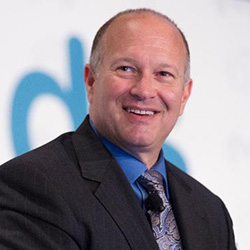In recent years, every IT provider has changed. They’ve acquired new tools and have retrained their teams to deliver new support offerings. But for all the work that IT providers and MSPs have done, industry averages for profitability haven’t changed. Put simply, MSP profit margins are too low.
Even more telling is that while the top providers have dramatically increased profits, the average providers’ results remain the same. In this article, I explain the core reason for this issue and how Macro Picanomics—a simple framework I developed in my own MSP—can help.
Complexity: The math has changed
Understanding profit margins was much easier in the past. If you were an hourly provider you only needed to know your hourly rate, utilization rate, and the cost of your technical services to determine gross profit. If you kept your team billable 85% of the time you made money. It was that simple.
Today, MSPs charge a monthly fee to clients that include a host of services. These services include support, automation, cloud features, consulting and more. This means you have multiple people or teams delivering services in addition to a set of tools and technology.
Relating all of the various costs to a monthly fee has proven to be challenging and has had a negative impact on profitability.
Looking at the wrong numbers
MSPs are always searching for the right metric to gain command over their profitability. Many times they look to the financials for answers. The problem is that many of the keys to achieving higher profitability aren’t found on your profit and loss statement.
Looking at numbers such as gross profit percentage and labor costs are important—but what do you do with the information? Most likely, your gross margin is low and your labor costs are high relative to revenue. Now what?
Macro Picanomics
The key to achieving results is to make the complex MSP model simple. Once you understand the economic principles underlying your business, you’ll be on the road to higher profits.
The concept of Macro Picanomics is to relate your primary costs (people) to revenue. The purpose is to identify the amount of service revenue you can generate per tech or per employee. If you understand the relationship between people and revenue, you’ll be able to make a complex decision more simple.
The first step is to define roles and assign people to those roles. Next, we can create a relationship between each role and how much revenue they can manage.
I recommend every MSP divide their business into five service delivery roles. Each of your technical resources should fit into one of these roles.
- Professional services: Implementing new technology and technology projects for your clients
- Reactive support: Providing reactive support for user requests and responding to alerts
- Centralized services: Managing your remote management and monitoring (RMM) as well as any cloud services
- Network administration: Continuous alignment of each client’s technology against your standards
- Technology consulting (vCIO): The business relationship with each client including strategy and budgeting
Next, look at the metrics that determine the amount of service revenue each role can manage. We call this leverage—the relationship between revenue and roles. As your leverage increases so does profitability. For example, if a vCIO can manage 35 accounts and each account is worth, on average, $2,000 then their leverage would be $70,000/month.
In other words, you need to add a vCIO every time you add $70,000 of monthly recurring revenue (MRR). The only way to increase your vCIO leverage is to manage more accounts or raise the average MRR amount.
Now go though the other four delivery areas applying the same logic and math. Reactive Support is the most complicated delivery area since the leverage in this area is affected by your average seat price and average number of tickets and alerts created.
Once you understand how to determine what affects leverage for each delivery area you can begin the process of increasing leverage in your business.





